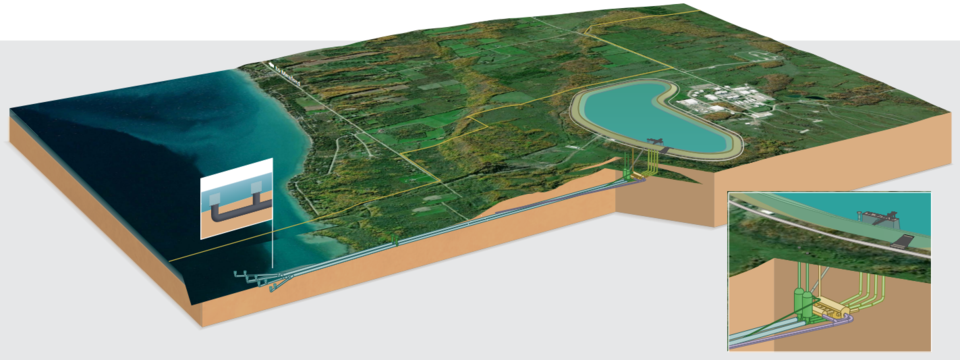In light of the current economic and health challenges the people of Ontario are facing, the need for clean, cost-efficient electricity is now more important than ever.
TC Energy’s Pumped Storage Project remains one of the largest climate change initiatives being developed in Canada. The project aims to provide enough electricity to meet the needs of a million homes in Ontario while in the process, addressing environmental challenges caused by global warming.
Not only that, the Pumped Storage Project addresses the export of locally-generated clean electricity to other provinces and the United States, which is now being sold at a cost of less than what it takes to power our homes and businesses here in Ontario.
What is Pumped Storage and how does it work?
Pumped Storage uses water and gravity to store and generate electricity based on power demands. During the night when clean energy is in excess supply, water is temporarily and safely withdrawn from Georgian Bay and stored in an ‘upper reservoir’. And when electricity is in demand, the water is released from the reservoir, carried by gravity through the same pipes, spinning turbines in the process to generate electricity that is sent back to the grid.
Think of it as on-demand hydro-electricity that reduces the need for gas-fired power generation. It incorporates state-of-the-art design and the latest technologies to protect the environment while producing 1,000 megawatts of flexible, clean energy to Ontario’s electricity system.
The Pumped Storage Project has evolved considerably since it was first proposed. As outlined in a recent article published on CollingwoodToday, since its inception, changes to the project plan include the relocation and burial of the powerhouse to mitigate noise production and reduce visibility. And, the repositioning of water intake/outlet to avoid sensitive near-shore marine habitats.
The results are no shoreline or near-shore structures, no visible in-water infrastructure, protection of fish and fish habitat, and avoidance of turbidity.
Changes to the plan are the result of ongoing feedback from the community.
What are the next steps?
TC Energy is awaiting a decision by the Department of National Defence to determine if the project can co-exist with the base, which houses the 4th Canadian Training Centre.
Following this step, the project will undergo an environmental impact assessment by the Impact Assessment Agency of Canada and the Ontario Ministry of Environment, Conservation and Parks to assess the environmental, economic, social and health impacts of the project.
The assessment identifies possible negative impacts as well as potential benefits of the project.
“It’s important to assess key elements of the environment before we move forward with the Pumped Storage Project,” says John Mikkelsen, P.Eng., M.A.Sc., Director, Power Business Development, TC Energy “This means looking into potential impacts on the natural environment, including sensitive fish habitats and increases in noise; impacts on the socio-economic environment, including economic benefits, community safety and visual aesthetics; and, consulting with Indigenous communities on land use and cultural heritage.”
The community will continue to have a say during this phase. All documents related to the project are available on the project website.
A Regional Economic Study conducted by an independent consultant shows that the project would have meaningful economic benefits regionally, provincially and nationally. Over a four-year construction period, it’s estimated that the project would create over a thousand jobs and inject more than $750 million directly into the region.
The complete economic study can be viewed here.
It’s time for Ontario to get full value for its clean energy while creating meaningful economic benefit for the community. For more information, visit tcenergy.com/pumpedstorage.
